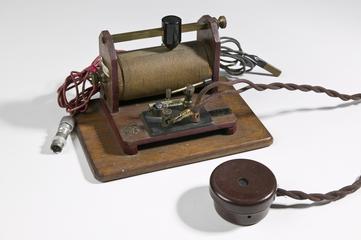






















Model of twin cotton mills made by F Wightman, Stretford, 1950.
Manchester's dramatic industrial transformation, starting in the last decades of the 18th century, paved the way for a global transformation in cotton manufacturing. Vast mills, like the one this model represents, were made possible because of the great wealth of cotton manufacturers in the region. The revolutionary new steam-powered textile machines that filled the extensive floors of these mills, needed human hands to run them. For workers, this meant long days of hard, heavy and sometimes dangerous toil.
This model represents a ‘super mill’, a style that emerged towards the end of the nineteenth century in a period of great prosperity and confidence for the cotton manufacturers in north west England. New innovations in building techniques using brick, concrete and steel allowed for the incorporation of larger windows and wider bays meaning even more machines could be worked at the same time. It was not unusual for ‘super mills’ to house 100,000 mule spindles or more. All these machines required energy. They were powered by engines fed by coal from local mines and water from adjacent water sources. In this model there is a constructed pond that would have fed the boilers. The model has two towering circular red and black chimneys, giving the mill its ‘twin’ title. Chimney stacks such as these characterised the skyline for generations, pumping smoke into the sky up to 14 hours a day, six days a week.
Details
- Category:
- Textile Industry
- Object Number:
- Y1969.31
- Materials:
- paint, wood (unidentified), metal (unknown), paper (fibre product) and resin (unidentified)
- Measurements:
-
Overall: 220 mm x 760 mm,
- type:
- model building
- credit:
- Gift of F Wightman




